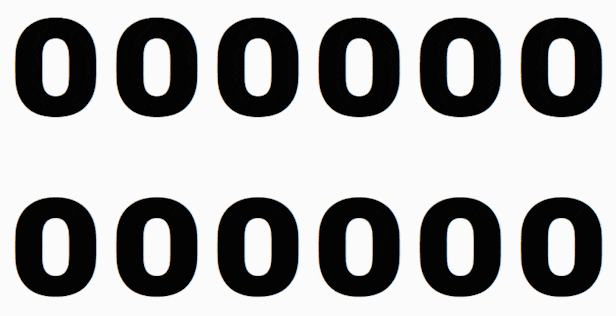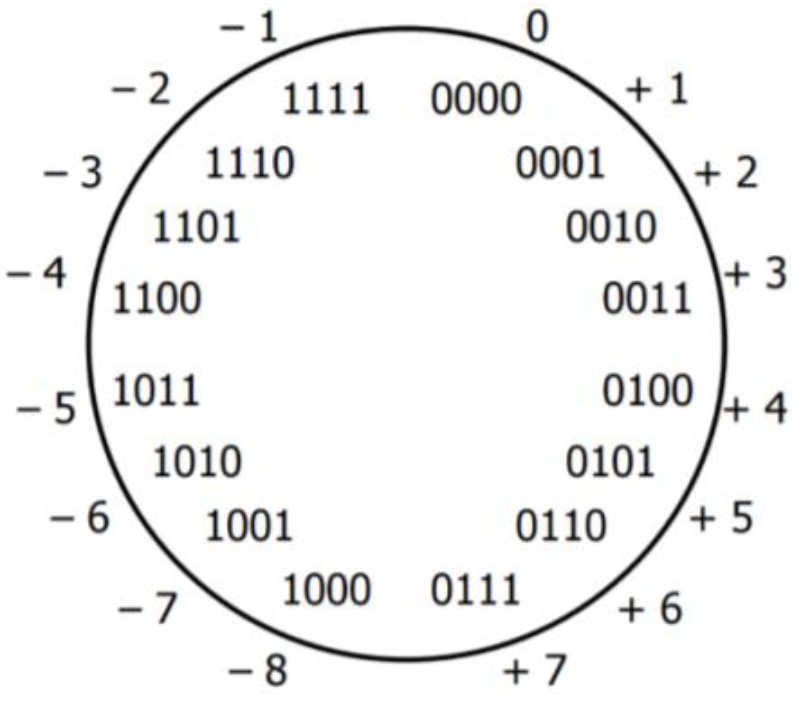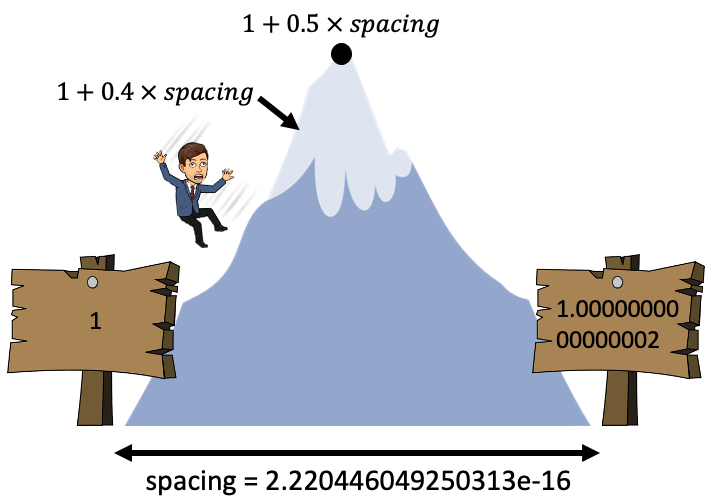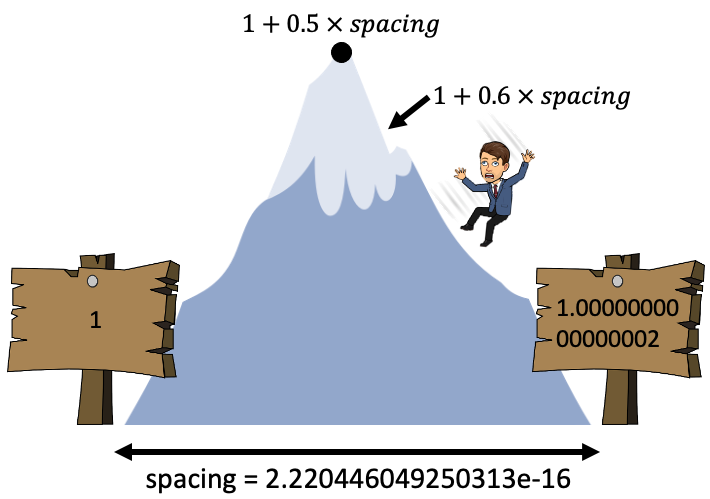
Lecture 1: Floating-Point Numbers#
Lecture Learning Objectives#
Compare and contrast the representations of integers and floating-point numbers
Explain how double-precision floating-point numbers are represented by 64 bits
Identify common computational issues caused by floating-point numbers, e.g., rounding, overflow, etc.
Calculate the “spacing” of a 64 bit floating-point number in Python
Write code defensively against numerical errors
Use
numpy.iinfo()/numpy.finfo()to work out the possible numerical range of an integer or float dtype
Imports#
import numpy as np
import matplotlib.pyplot as plt
from utils.floating_point import *
%config InlineBackend.figure_formats = ['svg']
plt.rcParams.update({'font.size': 12, 'axes.labelweight': 'bold', 'figure.figsize': (6, 4)})
❓❓ Questions for you#
Exercise 1.1#
iClicker cloud join link: https://join.iclicker.com/SDMQ
Which of the following Python statements do you think will return True?
(A)
1.0 + 2.0 + 3.0 == 6.0(B)
0.1 + 0.2 == 0.3(C)
1e16 + 1 == 1e16(D)
1e16 + 2 == 1e16(E)
1e16 + 1.0 + 1.0 == 1e16
Motivation: Floating Point Errors#
1.0 + 2.0 + 3.0 == 6.0
True
0.1 + 0.2 == 0.3
False
1e16 + 1 == 1e16
True
1e16 + 2.0 == 1e16
False
1e16 + 1.0 + 1.0 == 1e16
True
Computers cannot always represent numbers as accurately as some of us might think.
The problem boils down to this: we have a finite amount of bits in our computer to store an infinite amount of numbers.
This inevitably leads to precision errors, rounding errors, underflows, and overflows.
Although the rounding error in each calculation may seem insignificant, it can become substantial when accumulated over a large number of calculations.
Example 1#
Suppose you have an odometer which adds 1.0 cm (0.01) at a timestep. How would it look like after 100_000_000 timesteps (1000 kilometers)? (Example source)
# 1000 km = 1_000_000 meters = 100_000_000 cm
meters = np.float32(0.0)
iterations = 100_000_000
increment = np.float32(0.01)
for i in range(iterations):
meters += increment
print('Odometer reading after 1000 km: %6g km 😕' %(meters/1000))
Odometer reading after 1000 km: 262.144 km 😕
What’s going on here?
Example 2#
Suppose you work at a bank where the software rounds numbers to four decimal places. For example it would round the interest rate of 0.030045 to 0.0300.
Number of customers: \(\$1,000,000\)
Minimum account balance per customer: \( \$1,000\)
Actual yearly interest rate: \(\$0.030045 (3.0045\%)\)
Rounded yearly interest rate:\(\$0.0300 (3.00\%)\)
Interest per account:
Without rounding: \(\$1000 * \$0.030045 = \$30.045\)
With rounding: \(\$1000 * \$0.030 = \$30.00\)
Difference per account: \(\$30.045 - \$30.00 = \$0.045\)
Cumulative impact for 1 Million customers:
Total Error per year: \(\$0.045 / \text{account} * 1,000,000 \text{ accounts} = \$45,000\)
The per-account rounding error is small, just \(\$0.045\). However, across 1 million customers, this error aggregates to \(\$45,000\) per year!
Why is this relevant in deep learning and machine learning in general?#
Deep learning models are often trained on large datasets with millions of parameters and require a vast amount of numerical computations.
In such models, small rounding errors in floating-point calculations can accumulate as data passes through multiple layers and we might end up converging to a suboptimal set of parameters.
In general, precision of floating point numbers, efficient computation, and numerical stability are very important aspects in machine learning, especially in optimization.
In this lecture, we are going to take a journey to discover
How double-precision floating-point numbers are represented by 64 bits?
How bad are the rounding errors?
How can we code defensively against numerical errors?
Binary Numbers and Integers#
We are used to using a base-10 number system (i.e., “decimal” or “denary”)
For example, we can read the number 104 as:
1 x 100 (\(10^2\))
0 x 10 (\(10^1\))
4 x 1 (\(10^0\))
Or in a tabular format:
Unit |
\(10^2\) |
\(10^1\) |
\(10^0\) |
|---|---|---|---|
Value |
100 |
10 |
1 |
Number of units |
1 |
0 |
4 |
Total |
100 |
0 |
4 |
Many of you will be aware that computers use a base-2 system (i.e., “binary”) to store data
Binary is based on powers of 2 rather than powers of 10 and we only have two numbers (0 and 1) to work with (think of them as “off” and “on” switches respectively)
If you’re interested in learning more about how computers work under the hood, check out this excellent Youtube series on computer science by CrashCourse
In binary, 104 looks like:
f"{104:b}" # I'm using the python f-string format code "b" to display my integer in binary
'1101000'
We can also directly obtain the binary representation of a number using Python’s built-in bin() function:
bin(104)
'0b1101000'
So this is:
Unit |
\(2^6\) |
\(2^5\) |
\(2^4\) |
\(2^3\) |
\(2^2\) |
\(2^1\) |
\(2^0\) |
|---|---|---|---|---|---|---|---|
Value |
64 |
32 |
16 |
8 |
4 |
2 |
1 |
Number of units |
1 |
1 |
0 |
1 |
0 |
0 |
0 |
Total |
64 |
32 |
0 |
8 |
0 |
0 |
0 |
We call these single binary 0/1 values, bits
So we needed 7 bits to represent the number 104
We can confirm using the
.bit_length()integer method
x = 104
x.bit_length()
7
Here are the first 10 positive integers in binary (using 4 bits):
print("DECIMAL | BINARY")
print("================")
for _ in range(11):
print(f" {_:02} | {_:04b}")
DECIMAL | BINARY
================
00 | 0000
01 | 0001
02 | 0010
03 | 0011
04 | 0100
05 | 0101
06 | 0110
07 | 0111
08 | 1000
09 | 1001
10 | 1010
And a useful GIF counting up in binary to drive the point home:

Source: futurelearn.com
The range of unsigned integers we can represent with
Nbits is: 0 to \(2^{N}-1\), just like the range of unsigned integers withNdigits is: 0 to \(10^{N}-1\).The range of signed integers you can represent with
Nbits is: \(-2^{N-1}\) to \(2^{N-1}-1\)
(OPTIONAL) You don’t really need to know this, but it’s worth mentioning that:
The reason for why the range of 8-bit integers is -128 to 127, instead of -127 to 127 is because of a particular way of representing negative numbers in computer hardware (see these Wikipedia links: 1 and 2), known as two’s complement (this is the most widely used system today, but there are also other systems which you can find in the Wikipedia article).
It is basically a workaround, on the hardware level, to avoid having different methods for addition and subtraction for positive and negative numbers. In decimal, it’s like saying 700 - 250 = 450 can be done by writing 700 + 750 = 1450 and then drop the 1, giving 450 (750 is the tens’s complement of 250). Put otherwise, we turned a subtraction operation into an addition by doing this.
There is no negative zero in this system, which is why we get one more number to store for free (1,000,0000 in binary represents -128 in decimal). The more important implication of this is that there’s no check needed to see if non-zero values are not just negative zero (e.g., 1000 is non-zero, but would be interpreted as negative zero in a 4-bit digit that uses the sign-and-magnitude system of representing negative numbers).
For example, with 8 bits we can represent the unsigned integers 0 to \(2^8 - 1 = 255\), or signed integers from -128 to 127:
bits = 8
print(f"unsigned min: 0")
print(f"unsigned max: {2 ** bits - 1}\n")
print(f"signed min: {-2 ** (bits - 1)}")
print(f"signed max: {2 ** (bits - 1) - 1}")
unsigned min: 0
unsigned max: 255
signed min: -128
signed max: 127
We can confirm all this with the numpy function
np.iinfo():
np.iinfo("int8") # use np.iinfo() to check out the limits of a dtype
iinfo(min=-128, max=127, dtype=int8)
np.iinfo("uint8") # "uint8" is an unsigned 8-bit integer, so ranging from 0 to 2^7
iinfo(min=0, max=255, dtype=uint8)
Depending on the language/library you’re using, you may get an error or some other funky behaviour if you try to store an integer smaller/larger than the allowable
np.array([-129, 256]).astype("int8") # these numbers are outside the allowable range!
array([127, 0], dtype=int8)
(OPTIONAL) Reason:
In case of 256, it merely converts it to binary:
bin(256)
'0b100000000'
and then forces it to an 8-bit memory location, which means that only the zeros in 100000000 will be retained, and the 9-th digit (the leftmost 1) will be discarded. Therefore, we get zero.
On the other hand, since -129 is a negative number, NumPy computes the two’s complement of 129. To do that:
the first step is to flip 0s to 1s and 1s to 0s in
10000001(the binary representation of unsigned 129), which gives01111110and then add 1 to the result:
01111110 + 1 = 01111111. This bit pattern already belongs to another number in that range:
int(0b01111111)
127
This image below, which shows the 2’s complement circle in case of a 4-bit digit, makes this process more clear:

To store the example values above, we need more bits in the memory
For example, 16 bits will be more than enough:
np.array([-129, 128]).astype("int16")
array([-129, 128], dtype=int16)
You often see bits in multiples of 8 (e.g., 8, 16, 32, 64, etc)
8 bits is traditionally called 1 “byte”
Note: Python does not restrict the number of bits for storing an integer. It can dynamically allocate more memory to store your integer if needed.
x = 2 ** 2000
x
114813069527425452423283320117768198402231770208869520047764273682576626139237031385665948631650626991844596463898746277344711896086305533142593135616665318539129989145312280000688779148240044871428926990063486244781615463646388363947317026040466353970904996558162398808944629605623311649536164221970332681344168908984458505602379484807914058900934776500429002716706625830522008132236281291761267883317206598995396418127021779858404042159853183251540889433902091920554957783589672039160081957216630582755380425583726015528348786419432054508915275783882625175435528800822842770817965453762184851149029376
x.bit_length()
2001
Fractional Numbers in Binary#
At this point you might be thinking, “Well that’s all well and good for integers, but what about fractional numbers like 14.75?”
Let’s interpret the number 14.75 in our familiar decimal format
Unit |
\(10^1\) |
\(10^0\) |
\(10^{-1}\) |
\(10^{-2}\) |
|---|---|---|---|---|
Value |
10 |
1 |
0.1 |
0.01 |
Number of units |
1 |
4 |
7 |
5 |
Total |
10 |
4 |
0.7 |
0.05 |
That seems pretty natural, and in binary it’s much the same
Anything to the right of the decimal point (now called a “binary point”) is treated with a negative exponent
So in binary, 14.75 would look like this: 1110.11
Let’s break that down:
Unit |
\(2^3\) |
\(2^2\) |
\(2^1\) |
\(2^0\) |
\(2^{-1}\) |
\(2^{-2}\) |
|---|---|---|---|---|---|---|
Value |
8 |
4 |
2 |
1 |
0.5 |
0.25 |
Number of units |
1 |
1 |
1 |
0 |
1 |
1 |
Total |
8 |
4 |
2 |
0 |
0.5 |
0.25 |
Fixed Point Numbers#
As we learned earlier, we typically have a fixed number of bits to work with when storing a number, e.g., 8, 16, 32, 64 bits etc.
How do we decide where to put the binary point to allow for fractional numbers?
With 8 bits, one option is to put 4 bits on the left and 4 on the right:
Unit |
\(2^{3}\) |
\(2^{2}\) |
\(2^{1}\) |
\(2^{0}\) |
\(2^{-1}\) |
\(2^{-2}\) |
\(2^{-3}\) |
\(2^{-4}\) |
|---|---|---|---|---|---|---|---|---|
Value |
8 |
4 |
2 |
1 |
0.5 |
0.25 |
0.125 |
0.0625 |
In this case, the largest and smallest (closest to 0) numbers we could represent in the unsigned case are:
(2.0**np.arange(-4, 4, 1)).sum()
15.9375
2 ** -4
0.0625
But what if we wanted to represent numbers larger than this?
We could shift the binary point right, so we have 6 on the left and 2 on the right, then our range would be:
(2.0 ** np.arange(-2, 6, 1)).sum()
63.75
2 ** -2
0.25
We get this trade-off between being able to represent large numbers and small numbers
What if we want to represent both very large and very small numbers?
Floating-point numbers#
Rather than having a fixed location for our binary point, we could let it “float” around depending on what number we want to store
Recall “scientific notation”, which for the number 1234 looks like \(1.234 \times 10^3\), or for computers we usually use
e(exponent) for shorthand:
f"{1234:.3e}"
'1.234e+03'
The “exponent” controls the location of the decimal point
Consider the following numbers:
\(1.234 \times 10^0 = 1.234\)
\(1.234 \times 10^1 = 12.34\)
\(1.234 \times 10^2 = 123.4\)
\(1.234 \times 10^3 = 1234.\)
See how by changing the value of the exponent we can control the location of the floating point and represent a range of values?
We’ll be using the exact same logic with the binary system to come up with our “floating-point numbers”
This means that instead of powers of 10, we want to express numbers in powers of 2
This is floating point format:
\(M\) = Mantissa
\(E\) = Exponent
In binary, \(1.M\) is always between 1 and 2, just like in decimal the significand is always between 1 and 10 (if it’s bigger than that you simply add 1 to the powers of 2 or 10)
Consider the number 10
\(10 = 1.25 \times 2^3\)
So \(M=.25\) and \(E=3\)
But we want binary, not decimal, so \(M=01\) and \(E=11\)
Therefore, 10 in floating point binary is: \(1.01 \times 2^{11}\)
Note that the \(.\) is a “binary point” (or more generally the radix point), digits on the left are 2’s with positive exponents, digits on the right are 2’s with negative exponents
This is where the magic happens, just as the exponent of 10 in scientific notation defines the location of the decimal point, so does the exponent of a floating-point number define the location of the binary point
For \(1.01 \times 2^{11}\), the exponent is 11 in binary and 3 in decimal, so move the binary point three places to the right: \(1.01 \times 2^{11} = 1010.\)
What is the decimal representation of binary 1010?
int(0b1010)
10
We now have this “floating-point” data type that uses an exponent to help us represent both small and large fractional numbers (unlike fixed point where we would have to choose one or the other)
I wrote a function
binary()to display any number in floating point format:
binary(10)
Decimal: 1.25 x 2^3
Binary: 1.01 x 2^11
Sign: 0 (+)
Mantissa: 01 (0.25)
Exponent: 11 (3)
Let’s try the speed of light: \(2.998 \times 10 ^ 8 m/s\)
binary(2.998e8)
Decimal: 1.11684203147888184 x 2^28
Binary: 1.0001110111101001010111 x 2^11100
Sign: 0 (+)
Mantissa: 0001110111101001010111 (0.11684203147888184)
Exponent: 11100 (28)
A mole of a substance: \(6.02214076 \times 10^{23}\) particles
binary(6.02214076e23)
Decimal: 1.9925592330949422 x 2^78
Binary: 1.1111111000011000010111001010010101111100010100010111 x 2^1001110
Sign: 0 (+)
Mantissa: 1111111000011000010111001010010101111100010100010111 (0.9925592330949422)
Exponent: 1001110 (78)
Planck’s constant: \(6.62607004 \times 10^{-34} \left[m^2 kg / s\right]\)
binary(6.62607004e-34)
Decimal: 1.720226132656187 x 2^-111
Binary: 1.1011100001100000101111010110010101111011100111100001 x 2^-1101111
Sign: 0 (+)
Mantissa: 1011100001100000101111010110010101111011100111100001 (0.720226132656187)
Exponent: -1101111 (-111)
You get the point, we can represent a wide range of numbers with this format.
Floating Point Standard#
One question you might have about the above: how many bits should I use for the mantissa and how many for the exponent?
Well that’s already been decided for you in: IEEE Standard for Floating-Point Arithmetic (IEEE 754) which is what most computers/software use
You’ll mostly be using the data types
float64andfloat32Float 64 (also called “double precision”)
1 bit for the overall sign
52 bits for the mantissa (plus 1 implied bit)
11 bits for the exponent

Float 32 (also called “single precision”)
1 bit for the overall sign
23 bits for the mantissa (plus 1 implied bit)
8 bits for the exponent

# ?np.finfo
np.finfo(np.float64)
finfo(resolution=1e-15, min=-1.7976931348623157e+308, max=1.7976931348623157e+308, dtype=float64)
np.finfo(np.float64).tiny
2.2250738585072014e-308
Rounding Errors and Spacing#
Rounding Errors#
Many fractional numbers can’t be represented exactly using binary
Instead, your computer will round numbers to the closest representable number and we get rounding errors
For example, 0.1 can’t be exactly represented in binary (feel free to try and make 0.1 using binary floating point format).
Python usually hides this fact for us out of convenience:
0.1
0.1
but here is what’s stored in the memory as 0.1:
f"{0.1:.100f}"
'0.1000000000000000055511151231257827021181583404541015625000000000000000000000000000000000000000000000'
So 0.1 is actually represented as a number slightly bigger than 0.1
I wrote a function to work out if a number is stored exactly or inexactly, and to show the rounding error:
float_rep(0.1)
You entered: 0.1
Which is inexactly stored as: 0.1000000000000000055511151231257827021181583404541015625
float_rep(0.25)
You entered: 0.25
Which is exactly stored as: 0.25
Read more about float representation in the Python docs here.
The reason why the following returns False is none of these numbers are exactly represented.
0.1 + 0.2 == 0.3
False
float_rep(0.1)
You entered: 0.1
Which is inexactly stored as: 0.1000000000000000055511151231257827021181583404541015625
float_rep(0.2)
You entered: 0.2
Which is inexactly stored as: 0.200000000000000011102230246251565404236316680908203125
float_rep(0.3)
You entered: 0.3
Which is inexactly stored as: 0.29999999999999998889776975374843459576368331909179688
Spacing#
So how bad are these rounding errors? Let’s find out…
We can quantify the “spacing” between representable numbers
Imagine we’re in the decimal system again:
For a number with a fixed number of significant digits, the spacing between that number and the next greater number can be determined as the smallest significant digit multiplied by the exponent:
Number |
Next greater |
Spacing |
|---|---|---|
8.982e0 |
8.983e0 |
0.001e0 = 0.001 |
0.001e1 |
0.002e1 |
0.001e1 = 0.01 |
3.423e2 |
3.424e2 |
0.001e2 = 0.1 |
The spacing can be determined as the smallest part of the mantissa multiplied by a number’s exponent
The same goes for binary. The steps happen at every power of 2 instead of 10, and we have way more digits after the decimal (52 instead of 3), but everything else is pretty much the same.
So the spacing size, as a function of the number itself, is a staircase function:
x = np.linspace(1, 100000, 10000000)
spacing = (2 ** -52) * 2**np.floor(np.log2(x))
plt.loglog(x, spacing)
plt.xlabel("Number itself")
plt.ylabel("Gap to the next number");
As the magnitude of the number increases (\(\uparrow\))
The exponent increases (\(\uparrow\))
The spacing between representable numbers increases (\(\uparrow\))
The precision decreases (\(\downarrow\))
For
float64, we have 52 explicit bits for the mantissa, therefore the smallest significant digit is \(2^{-52}\)
2 ** -52
2.220446049250313e-16
Numpy has a helpful function we can use to calculate spacing
np.nextafter(x1, x2)returns the next representable floating-point value afterx1towardsx2The next representable number after 1 should be 1 plus the spacing above, let’s check:
np.nextafter(1, 2)
1.0000000000000002
spacing = np.nextafter(1, 2) - 1
spacing
2.220446049250313e-16
spacing == (2 ** -52) * (2**0)
True
If you do a calculation that puts you somewhere between the space of two numbers, the computer will automatically round to the nearest one
I like to think of this as a mountain range in the computer
In the valleys are representable numbers, if a calculation puts us on a mountain side, we’ll roll down the mountain to the closest valley
For example, spacing for the number 1 is \(2^{-52}\), so if we don’t add at least half that, we won’t reach the next representable number:
1 + 0.4 * spacing == 1 # add less than half the spacing
True

1 + 0.6 * spacing == 1 # add a more than half the spacing
False

We’re working with pretty small numbers here so you might not be too shocked
But remember, the bigger our exponent, the bigger our rounding errors will be!
large_number = 1e25
binary(large_number)
Decimal: 1.03397576569128469 x 2^83
Binary: 1.0000100010110010101000101100001010000000001010010001 x 2^1010011
Sign: 0 (+)
Mantissa: 0000100010110010101000101100001010000000001010010001 (0.03397576569128469)
Exponent: 1010011 (83)
The exponent is 83 so the spacing should be:
spacing = (2 ** -52) * (2 ** 83)
print(f"{spacing:.5e}")
2.14748e+09
Or with np.nextafter:
num = 2.0 ** 83
spacing = np.nextafter(num, 2.0**84) - num
spacing
2147483648.0
1 billion is less than half that spacing, so if we add it to
large_number, we won’t cross the mountain peak, and we’ll slide back down into the same valley:
one_billion = 1e9
1e25 + one_billion == 1e25 # adding a billion didn't change our number!
True
2 billion is more than half that spacing, so if we add it to
large_number, we’ll slide into the next valley (representable number):
two_billion = 2e9
1e25 + two_billion == 1e25 # adding two billion (more than half the spacing) did change our number
False
Another implication of having a finite number of floating point digits to represent an infinite number system is that two numbers may share the same representation in memory
For example, these are all
True:
0.99999999999999999 == 1
True
1.00000000000000004 == 1
True
1.00000000000000009 == 1
True
No matter what number you are, if you don’t pass over the peak to your left or right, you’ll roll back down to the valley
And also remember, the bigger the number, the bigger the spacing/rounding errors
❓❓ Questions for you#
Exercise 1.2#
Now that you know about spacing discuss the reasons for the following.
0.1 + 0.2 == 0.3
False
1e16 + 1 == 1e16
True
1e16 + 2.0 == 1e16
False
binary(1e16)
Decimal: 1.11022302462515654 x 2^53
Binary: 1.0001110000110111100100110111111000001 x 2^110101
Sign: 0 (+)
Mantissa: 0001110000110111100100110111111000001 (0.11022302462515654)
Exponent: 110101 (53)
bin(18)
'0b10010'
1e16 + 1.0 + 1.0 == 1e16
True
More on Floating Points#
(OPTIONAL) Floating Point Range#
Recall that most compute environments you’ll encounter will be using IEEE double precision (float64), so 52 bits for the mantissa, 11 for the exponent. In order to obtain the range of values for IEEE float64, we first need to know that the exponent in this standard is expressed differently than we expect. Let’s see:
With 11 bits, we would expect the range of representable signed integers to be \(-2^{10}\) to \(2^{10} - 1\) (i.e. \(-1024\) to \(+1023\)). We learned in previous sections that the two’s-complement system avoids having both \(-0\) and \(+0\), and thus enables us to store one more number instead of one of those signed zeros.
Instead of the two’s-complement system, however, IEEE float64 numbers use a biased format to represent the exponent.
This is done to make comparison between two floating-point numbers easier, if the entire bit pattern is taken to be an integer (see this for more info).
In the biased format, the entire signed exponent is represented as an unsigned integer, with a bias subtracted from it. With 11 bits, the range of unsigned values we can store would be \(0\) to \(2^{11} - 1\) or \(2047\).
With the bias set to \(1023\), the range of signed values represented by those numbers would be
\(0 - 1023 = -1023\)
to
\(2047 - 1023 = 1024\)
Two numbers from that range are used for special cases (such as subnormal numbers or infinities):
all 0 bits (\(-1023\)), and
all 1 bits (\(+1024\))
Finally, this means that the smallest exponent is \(-1022\) and the greatest exponent is \(+1023\).
For
float64, the maximum mantissa can be calculated as the sum of all 52 bits from (\(2^{-1}\) to \(2^{-52}\)):
max_mantissa = (2.0 ** np.arange(-1, -53, -1)).sum()
max_mantissa
0.9999999999999998
Therefore the maximum float we can represent is (remember our format is \(1.M \times 2 ^ E\)):
(1 + max_mantissa) * 2 ** 1023
1.7976931348623157e+308
Let’s confirm using the
numpyfunctionnp.finfo():
np.finfo(np.float64).max
1.7976931348623157e+308
What happens if we try to make a number bigger than this?
# 10.0 ** 309
Or in
numpy, it throws a warning and defaults toinf:
np.power(10.0, 309)
/var/folders/b3/g26r0dcx4b35vf3nk31216hc0000gr/T/ipykernel_16523/1970181666.py:1: RuntimeWarning: overflow encountered in power
np.power(10.0, 309)
inf
Now let’s do the minimum value:
1.0 * (2 ** -1022)
2.2250738585072014e-308
You don’t need to worry about this derivation too much, after all
numpycan help!
np.finfo(np.float64).minexp # minimum exponent value
-1022
np.finfo(np.float64).tiny # smallest possible positive value
2.2250738585072014e-308
(OPTIONAL) Subnormal Numbers#
What happens if we try to store a number smaller than the above?
2 ** -1024
5.562684646268003e-309
Um, it worked… 🤔
Remember how I discussed “special bit patterns” earlier? One of these is “subnormal numbers”
This is well beyond the scope of the course, but briefly, subnormal numbers help us fill the gap between 0 and \(2^{-1022}\)
If the exponent is set to its minimum value, then we can play with the bits (if we are willing to sacrifice precision): instead of the mantissa starting with a 1, we can start it with a 0
This gives our mantissa a minimum value of \(2^{-52}\) (rather than 1, which is what we had before)
So the smallest subnormal number we can have is \(2^{-52} \times 2 ^ {-1022} = 2 ^ {-1074}\):
2 ** -1074
5e-324
Anything less than this is rounded to 0:
2 ** -1075
0.0
Note that with subnormal numbers, we lose more and more precision for smaller and smaller numbers, because we can no longer use the exponent to make the binary point float around.
You can read more in this article and this stackoverflow post, but as I said, this is beyond the scope of the course.
Order of Operations#
Consider the following:
1e16 + 1 + 1 == 1 + 1 + 1e16
False
What’s up with that?
Let’s break it down…
First the spacing of
1e16is:
spacing = np.nextafter(1e16, 1e17) - 1e16
spacing
2.0
1e16 + 1 == 1e16
True
So the above should make sense, we aren’t adding more than half the spacing, so we remain at
1e16Another example:
1e16 + (1 + 1) == 1e16
False
This time we added
(1 + 1), which is more than half the spacing, and we got aFalseas expectedBut now let’s remove the parentheses:
1e16 + 1 + 1 == 1e16
True
Back to
True, what’s going on…Well we have an “order of operations” here, the
1e16 + 1happens first, which is just1e16, and then we try add1again but the same thing happensWhat do you think will happen with this one?
1 + 1 + 1e16 == 1e16
False
This time, the
1 + 1happened first, which is2, and then we add1e16
Writing Functions#
Later in this course we’ll create a Logistic Regression model from scratch and you’ll have to calculate something that looks like:
\(\log(1+\exp(z))\)
Looks pretty harmless right?
def log_1_plus_exp(z):
return np.log(1 + np.exp(z))
But what happens if
zis large? Say, 1000:
log_1_plus_exp(1000)
/var/folders/b3/g26r0dcx4b35vf3nk31216hc0000gr/T/ipykernel_16523/2578511584.py:2: RuntimeWarning: overflow encountered in exp
return np.log(1 + np.exp(z))
inf
We get an overflow error when
zinexp(z)is large!In fact, we can find out what the limit of
zis:
max_float = np.finfo(np.float64).max
max_float
1.7976931348623157e+308
np.log(max_float)
709.782712893384
If we pass anything bigger than that into
np.exp()we’ll get an overflow error
np.exp(710)
/var/folders/b3/g26r0dcx4b35vf3nk31216hc0000gr/T/ipykernel_16523/574927170.py:1: RuntimeWarning: overflow encountered in exp
np.exp(710)
inf
However, you might know that for \(z \gg 1\):
\(\log(1+\exp(z)) \approx \log(\exp(z)) = z\)
e.g.:
z = 700
np.log(1 + np.exp(z))
700.0
The returned looks the same as \(z\)!
We can use this to account for the overflow error:
@np.vectorize # decorator to vectorize the function
def log_1_plus_exp_safe(z):
if z > 100:
print(f"Avoiding overflow error with approximation of {z:.0f}!")
return z
else:
return np.log(1 + np.exp(z))
log_1_plus_exp_safe([1, 10, 100, 1000])
Avoiding overflow error with approximation of 1000!
array([ 1.31326169, 10.0000454 , 100. , 1000. ])
This is part of the reason we use libraries like
numpy,scipy,scikit-learn, etc. They’ve taken care of all of this for us.
Precision, Memory, Speed#
So double precision floats are pretty standard and require 64 bits to store:
np.float64().nbytes # number of bytes consumed by a float64
8
np.float64().nbytes * 8 # recall 1 byte = 8 bits
64
When dealing with huge datasets or models with millions or billions of parameters it may be desirable to lower the precision of our numbers to use less memory and/or gain speed
x64 = np.random.randn(1000, 1000)
print(f"array size: {x64.shape}")
print(f"array type: {x64.dtype}")
print(f"mem. usage: {x64.nbytes / (1000 * 1000)} MB")
array size: (1000, 1000)
array type: float64
mem. usage: 8.0 MB
x32 = x64.astype('float32')
print(f"array type: {x32.dtype}")
print(f"mem. usage: {x32.nbytes / (1000 * 1000)} MB")
array type: float32
mem. usage: 4.0 MB
Below I’m squaring the elements of my two arrays. They have the same number of elements, but different data types - let’s observe the difference in the speed of the operation:
time64 = %timeit -q -o -r 3 x64 ** 2
time32 = %timeit -q -o -r 3 x32 ** 2
print(f"float32 array is {time64.average / time32.average:.2f}x faster than float64 array here.")
float32 array is 2.16x faster than float64 array here.
I’m showing you this as foreboding for later topics dealing with memory and deep neural networks, where we’ll use these ideas of precision vs speed to optimize our models.
❓❓ Questions for you#
Exercise 1.3#
iClicker cloud join link: https://join.iclicker.com/SDMQ
Select all of the following statements which are TRUE.
(A) In IEEE double precision representation, the spacing between two consecutive representable numbers is constant throughout the entire range of numbers.
(B) In floating-point arithmetic, the associative property of addition (i.e., (a + b) + c = a + (b + c)) doesn’t always hold true.
(C) In floating-point representation, increasing the number of bits in the exponent part can increase the precision of the representation.
(D) A 64-bit floating-point number typically uses twice as much memory as a 32-bit floating-point number.
(E) In floating point arithmetic, it’s often recommended to check if the numbers are close within a small tolerance instead of checking for equality directly.
V’s Solutions!
B, D, E
Three ways to calculate spacing.
np.spacing(1e25)
2147483648.0
np.nextafter(1e25, 1e26) - 1e25
2147483648.0
2**-52 * 2**83
2147483648.0
Lecture Highlights#
Most fractional numbers are not represented exactly by floating-point numbers in computers which can lead to rounding errors.
Most compute environments you’ll encounter will use IEEE double precision, but others do exist (especially single precision). Some software will require you to use a particular data type due to computational limitations (for example, PyTorch sometimes forces you to use
float32instead offloat64).There is a biggest and smallest floating-point number (depending on precision), beyond these we get overflow or underflow errors. Use
np.nextafter()andnumpy.finfo()to work out float spacing and ranges.
